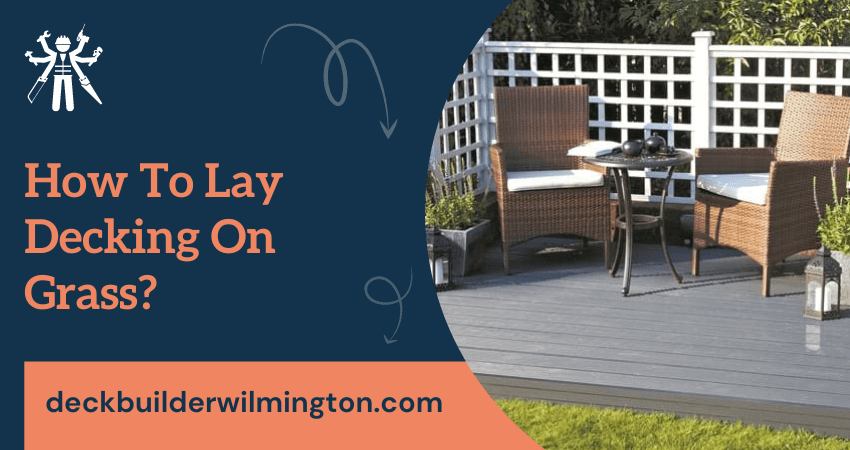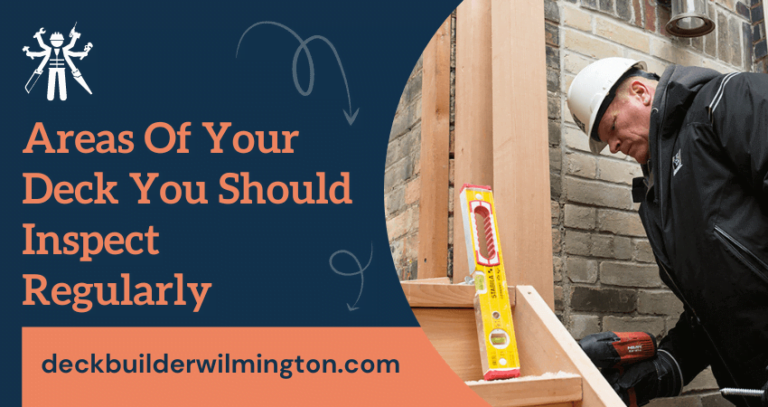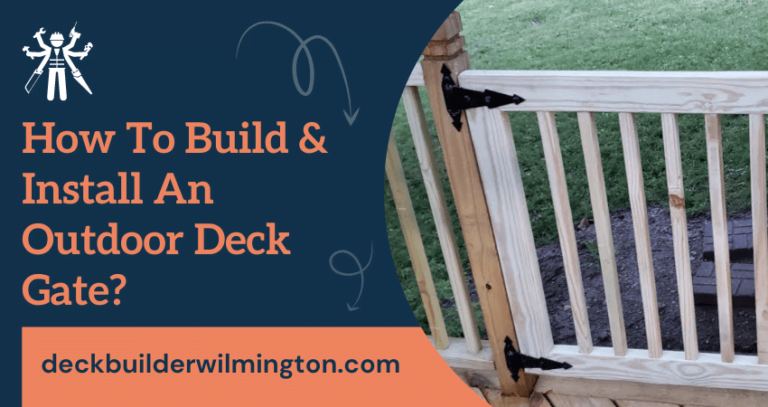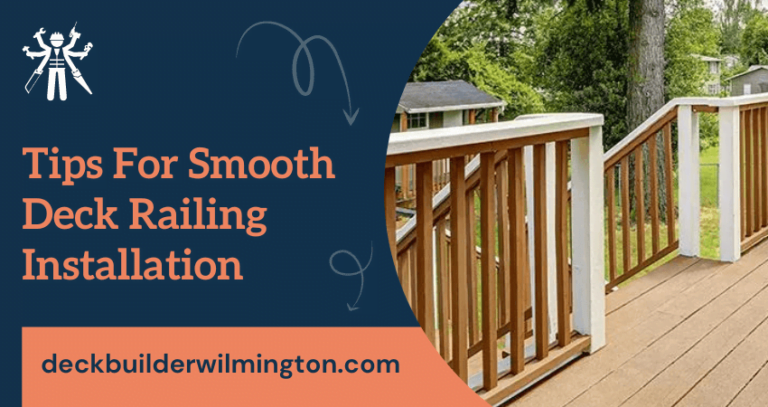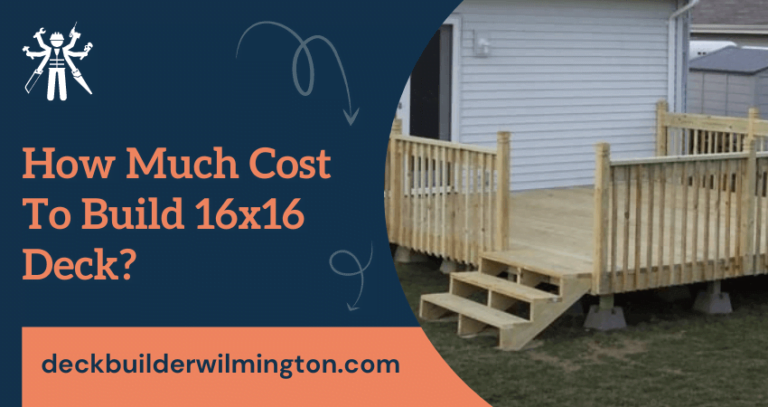How To Lay Decking On Grass?
Building a deck can be a great solution if you want to create a comfortable outdoor living space. However, if your backyard is covered in the grass you may wonder how to lay a deck over it. While it may seem like a daunting task, it is possible to lay decking on the grass with a bit of preparation and careful planning.
In this article, we will discuss the step-by-step process of laying decking on grass, including how to prepare the ground, the tools and materials you’ll need and install the decking.
By the end of this guideline, you can transform your lawn into a comfortable and inviting outdoor living space that you and your family can enjoy for years to come. Keep reading for tips and tricks on how to lay decking on grass like an expert!
Steps To Lay Decking On Grass
Here’s a step by step guide to laying decking on grass:
1) Planning and Preparation
Before you begin, you need to plan your project and prepare the ground for your deck.
- Measuring the area: Start by measuring the area where you want to put your deck. This will help you determine how much material you need and give you an idea of the layout you’ll be working with.
- Choosing the right materials: Once you have measured the area, you can select the appropriate materials for your deck. This may include choosing the type of wood, composite decking, or other materials that will be durable, weather-resistant and fit your aesthetic preferences.
- Obtaining necessary tools: Before you start building, you’ll need to make sure you have all the necessary tools, such as saws, hammers, drills and other equipment to cut and install the decking materials properly.
- Preparing the ground: The next step is to prepare the ground where the deck will be built. This may involve removing any grass, rocks, or other obstacles, as well as leveling the area and ensuring that the soil is compacted and stable.
- Preparing the decking boards: Finally, you’ll need to prepare the decking boards themselves, including cutting them to size, sanding any rough edges and sealing or staining them to protect against weather damage. This step is crucial to ensure that your deck will be both beautiful and long-lasting.
2) Building a Foundation
Building a frame for the decking and installing foundation posts are important steps in building a strong and stable deck foundation.
- Building a frame: Building a frame for the decking involves creating a sturdy and level structure on which the deck boards will be laid. This is typically done with pressure-treated lumber that is resistant to moisture and rot. The frame provides support for the decking and helps distribute the weight of the deck and its occupants evenly across the posts.
- Installing foundation posts: It is another crucial step in building a strong deck foundation. The posts are typically set into concrete footings that are buried in the ground to provide stability and prevent the deck from shifting or settling over time. The posts must be plumb and level and securely anchored to the footings to ensure the deck is safe and stable.
- Leveling the area: Once the frame and posts are in place, you’ll need to make sure the area where the deck boards will be laid is level. This can be done with a shovel or a garden rake. The area should be smooth and even so that the decking boards lay flat and don’t cause any tripping hazards.
It is important to follow local building codes and regulations when building a deck, as these will guide minimum requirements for footings, posts and framing.
3) Laying the Decking
Laying the decking is a critical step in the construction of a deck and involves several important tasks:
- Placing the decking boards involves laying the boards across the frame in a straight and consistent manner. The boards should be spaced uniformly to allow for proper drainage and ventilation and to prevent warping or cupping over time.
- Securing the boards to the foundation involves attaching the boards to the frame using deck screws or nails. This ensures that the boards are firmly anchored to the frame and helps prevent movement or shifting.
- Cutting boards to fit the area is often necessary when dealing with non-standard deck sizes or shapes. This may involve cutting boards to fit around obstacles such as trees or posts or trimming boards to fit the edges of the deck. When cutting boards, it is important to measure and mark carefully to avoid wasting material and ensure a precise fit.
4) Finishing Touches
Finishing touches are the final steps in building a deck and include several important tasks:
- Sealing the decking involves applying a protective coating to the surface of the deck boards. This helps prevent water damage, rot and discoloration and can extend the lifespan of the deck. There are many different types of sealers available, including clear, tinted and solid-color options.
- Adding railings and stairs is an important safety feature for a deck, particularly if it is elevated or has multiple levels. Railings can be made from a variety of materials, including wood, metal and composite materials and can be designed to complement the style of the deck. Stairs should be built to code and feature slip-resistant treads and secure handrails.
- Landscaping around the decking can help enhance the overall look and feel of the deck and can also provide privacy and shade. This may involve planting shrubs or trees, installing trellises or pergolas, or adding decorative elements such as potted plants or outdoor lighting.
- These finishing touches can greatly enhance the functionality and aesthetic appeal of a deck and should be carefully planned and executed. It is important to choose materials and designs appropriate for the local climate and the intended use of the deck.
Following manufacturer instructions and consulting with a professional builder can help ensure that the finishing touches are completed correctly and safely.
Maintenance And Caring Tips After Laying Deck On Grass
Cleaning the decking:
- Sweep the surface regularly to remove debris and dirt.
- Use a stiff brush to remove any dirt or grime that has accumulated in the gaps between the decking boards.
- Use a pressure washer to clean the surface but be sure to use a low-pressure setting to avoid damaging the wood.
- Avoid using harsh chemicals or bleach to clean the decking, as they can cause discoloration and damage to the wood.
- If you need to use a cleaning solution, use one specifically designed for cleaning wood decking.
Preventing damage to the decking:
- Use furniture pads or coasters to protect the decking from scratches and dents caused by heavy furniture.
- Avoid dragging heavy objects across the decking surface to prevent damage.
- Keep the decking clear of debris, as organic matter such as leaves and branches can trap moisture and cause decay.
- Trim any nearby trees or shrubs to prevent them from damaging the decking with their branches or roots.
- Avoid using metal shovels or sharp tools on the decking surface, as they can scratch or dent the wood.
Regular maintenance tips:
- Inspect the decking regularly for any signs of damage or decay and repair or replace any damaged boards as soon as possible.
- Apply a protective sealant to the decking every few years to protect it from moisture and sun damage.
- Apply a wood preservative to the decking to prevent insect damage and rot.
- Keep the area beneath the decking clear of debris and ensure that adequate ventilation is maintained to prevent moisture buildup.
- Avoid placing hot objects directly on the decking surface, as they can cause discoloration and damage to the wood.
FAQs – Laying Decking On Grass
Do I need to treat the decking before laying it on the grass?
It’s not necessary to treat the decking before laying it on the grass but it is generally recommended to do so to ensure the longevity and durability of the decking.
Untreated decking materials such as natural wood can be susceptible to rot, insect damage and other forms of decay. Therefore, treating the decking with a sealant or preservative before installation can help protect it from these issues and increase its lifespan.
Do you need to remove grass before laying decking?
In general, it is recommended to remove the grass and other vegetation before laying decking. This is because if you leave the grass underneath the decking, it can continue to grow and may eventually cause issues such as unevenness and instability.
To remove the grass, you can use a shovel or sod cutter to cut it into manageable sections, then lift and remove it from the area.
Alternatively, you can use an herbicide to kill the grass before removing it but be sure to follow the manufacturer’s instructions carefully and allow enough time for the herbicide to take effect before removing the grass.
How long will the decking on the grass last?
The lifespan of decking on grass can vary depending on several factors, including the quality of the materials used, the method of installation and the level of maintenance and care provided over time.
In general, decking that is properly installed and maintained can last for many years, even when installed on grass. However, without proper preparation and care, the decking may be more susceptible to issues such as rot, warping and insect damage, which can significantly reduce its lifespan.
Final Words
Laying decking on grass can be a great way to create an outdoor space for relaxation and entertainment. To do so, it is important to properly prepare the site by clearing the grass and leveling the ground. Building a frame for the decking and adding a weed barrier can help ensure the longevity of the structure.
Finally, installing the decking boards and finishing them with a protective coating can create a beautiful and functional outdoor area. By following these steps and taking the necessary precautions, it is possible to create a beautiful and functional deck that will enhance any outdoor space.

